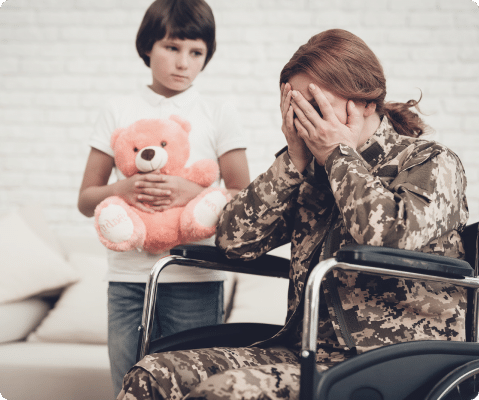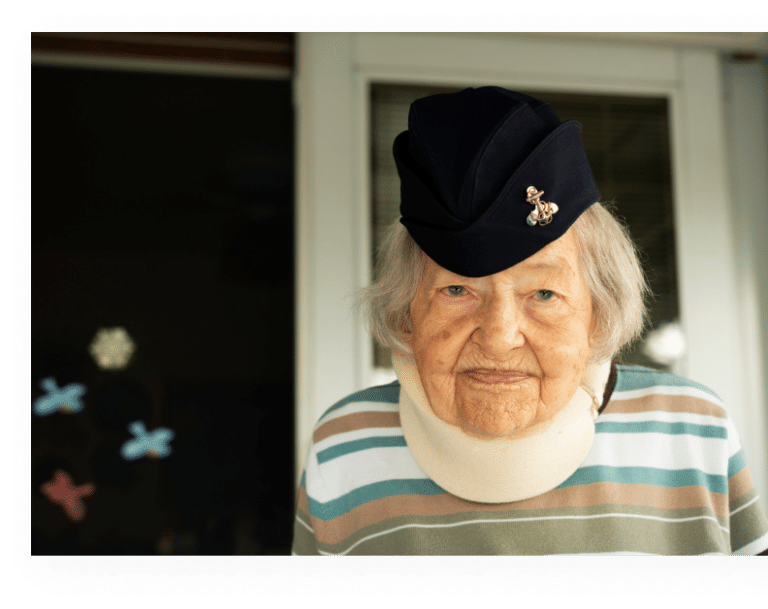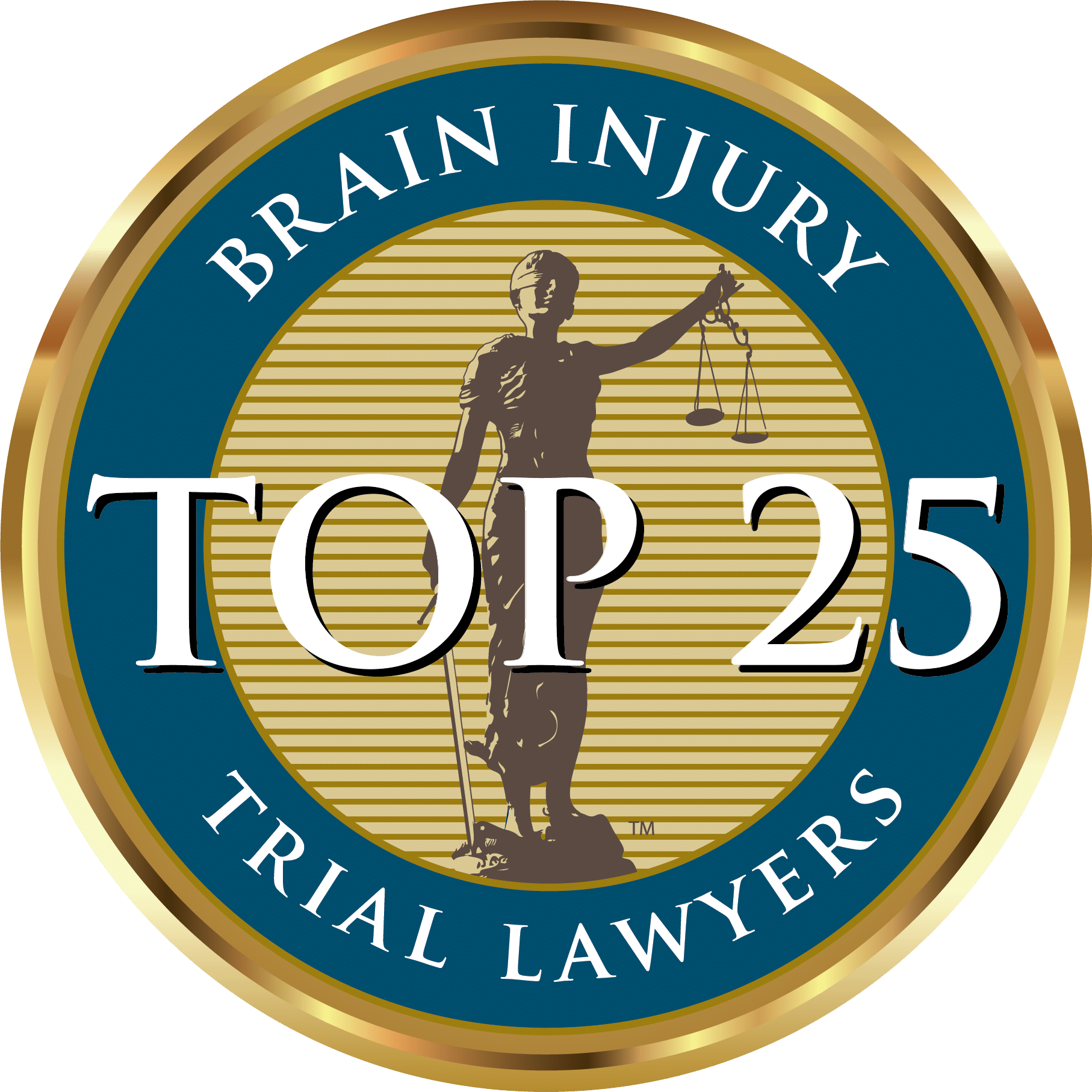Complex Regional Pain Syndrome (CRPS) - How Women and Veterans are Disproportionately Affected, And Resources for Help
Complex regional pain syndrome, or CRPS, is prolonged and excessive pain and inflammation following an injury to an arm or leg. It usually develops after an injury, stroke, or heart attack. Statistics show the condition disproportionately affects women and veterans. Cordisco & Saile LLC offers this guide to educate the public about CRPS and provide resources to those dealing with the condition.
Complex regional pain syndrome, known as CRPS, is a chronic pain condition that disproportionately affects women and veterans. It has several symptoms, including spontaneous pain that fluctuates with activity, changes in skin temperature, stiffness in affected joints, and excess bone growth.
CRPS can have long-term, life-altering effects. This guide provides information about the condition, resources for those suffering from the condition, and details for those seeking benefits and other help.
Understanding CRPS
Complex regional pain syndrome is chronic pain typically affecting an arm or leg. It usually develops after injury, heart attack, or stroke. There are two types of CRPS:

- Type 1 happens after an injury or illness that doesn’t directly damage the nerves in the affected limb. It used to be called reflex sympathetic dystrophy, or RSD. Around 90 percent of CRPS patients have Type 1.
- Type 2 has similar symptoms as type 1. However, it usually happens after a distinct nerve injury. Type 2 was once called causalgia.
CRPS can be extremely painful. Most CRPS patients will experience motor impairment, with limited range of motion and weakness being the most common impairments. Some patients may even develop uncontrollable muscle contractions or spasms.
What Causes CRPS?
According to the National Institute of Health, over 90 percent of CRPS cases result from nerve injury or trauma that damages the body’s “small fibers.” These fibers lack insulating thick myelin sheaths and transmit itch, pain, and temperature sensations.
Common accidents and incidents that lead to CRPS include the following:
- Automobile accidents can cause strains, sprains, fractures, and other injuries that damage the body’s small fibers.
- Slips and falls can cause fractures, causing nerve injuries. If a slip-and-fall accident causes bone fractures, a tight cast can also press on nerves and restrict blood flow to the limbs, causing damage to the body’s small fibers.
- Stroke, heart attack, abnormal blood vessels, clots, tumors, and infections may also irritate and injure nerves, triggering the condition.
Less than 10 percent of people with CRPS report no injury or trauma. These individuals often develop CRPS due to an undiagnosed internal nerve injury, such as nerves rubbing against scars or hard internal structures.
Talk to a medical professional to learn more about what caused your CRPS.


Who Does CRPS Impact the Most?
A retrospective cohort study showed females are more likely to have CRPS than males. However, women do not experience more severe CRPS symptoms—another study revealed no gender difference in CRPS signs and symptoms.
Veterans of both sexes are also more likely to develop CRPS. A South Korean study revealed that CRPS type I occurred significantly more frequently in service members than non-service members.
Most CRPS patients are around 40 years old. The condition is rare in the elderly, who experience less inflammation after injury, and young children, who heal completely and quickly from injuries. According to the National Organization for Rare Diseases, CRPS affects nearly 200,000 patients yearly in the United States. It occurs most frequently in people of European ancestry.
What Are the Symptoms of CRPS?
CRPS symptoms vary depending on the individual. Common symptoms include the following:
- Prolonged or excess pain: People with CRPS may have increased sensitivity in the affected area. Gently touching the area and moving that body part can be very painful.
- Spontaneous or unprovoked pain: CRPS patients often experience spontaneous pain that is constant or fluctuates with activity. They may feel pins and needles or a burning sensation.
- Stiffness in affected joints: Due to pain, CRPS patients may move less, reducing the flexibility of ligaments and tendons.
- Changes in skin texture: CRPS patients may have excessively sweaty or shiny and thin skin.
- Changes in skin temperature: The skin on the affected limb may feel cooler or warmer than the unaffected one.
- Skin swelling: Swelling may be constant or fluctuate.
- Changes in skin color: People with CRPS may have purple, bruised, pale, blotchy, or red skin.
- Changes in hair or nail growth: CRPG patients may have rapid nail and hair growth or no growth.
Long-Term Effects of CRPS
Most CRPS patients recover when the injured nerves regrow. This can take anywhere from a few months to years. However, the injured nerves do not regrow in some cases, leading to long-term disability and severe pain.
The long-term effects or outcome depend on the severity of the injury that caused CRPS and the individual’s nerve and general health. Young people, children, teenagers, and older adults with good nutrition and circulation almost always recover from CRPS. Conversely, people who smoke are less likely to recover since smoking can prevent nerve regeneration. Chemotherapy and diabetes can also prevent nerves from regrowing.

Treatment for CRPS
CRPS treatments are most effective when started early. Here are some widely-used therapies for CRPS:
- Physical therapy and rehabilitation: This is the most important CRPS treatment. It helps prevent or reverse nerve damage and brain differences associated with chronic pain and disuse by improving blood flow and reducing circulatory symptoms. It also boosts strength, flexibility, and function.
- Graded motor imagery: Therapists help CRPS patients minimize pain by teaching them how to imagine moving a painful part of their body. This can train the patients’ brains to stop creating pain.
- Psychotherapy: People with severe CRPS usually develop psychological problems such as situational anxiety, depression, and post-traumatic stress disorder. These conditions increase pain perception and reduce brain function and activity, making it more challenging for patients to recover and seek rehabilitation. Psychotherapy can address CRPS patients’ psychological problems and make recovery from CRPS easier.
Talk to your medical provider to learn more about CRPS treatments.
Resources for Survivors and Their Families
CRPS can be difficult to deal with alone. Here are some resources that CRPS survivors and their families can turn to for help:
- Reflex Sympathetic Dystrophy Syndrome Association, or RSDSA, is a not-for-profit organization. It provides education, support, and hope to people affected by CRPS, including support groups and the Jenkins Patient Assistance Fund.
- CRPS Warriors supports the well-being and care of CRPS patients and their families through research, education, financial assistance, and programs. It offers scholarships, fundraising events, and information about CRPS treatments.
- The American Academy of Physical Medicine and Rehabilitation, or AAPM&R, is a national medical specialty organization representing over 10,000 physician specialists in physical medicine and rehabilitation. CRPS patients can use the “Find a PM&R Physician” tool to locate suitable medical providers.
CRPS Disability Claims
If you have long-term CRPS that prevents you from engaging in substantial gainful activity, you may be eligible to file a Social Security Disability claim. You must establish the following in any CRPS disability claim:
- Proof of CRPS diagnosis: Social Security requires objective proof of long-term disabilities that prevent you from working. Visit your doctor for an official CRPS diagnosis.
- A narrative letter from your doctor: Your doctor should write about how CRPS affects your daily life and the limitations that prevent you from working.
- Proof of CRPS treatment: Social Security requires you to receive appropriate treatment to get long-term disability benefits. Although there is no cure for CRPS, health care providers may prescribe certain medications and therapies. These include anti-depression medications, neural stimulation, sympathectomy, physical therapy, opioid pain medications, and psychotherapy.
If you or a loved one have CRPS, contact Cordisco & Saile’s trusted Pennsylvania CRPS lawyers. We can connect you with resources and determine your next steps. Depending on your case, you may be eligible to file a disability claim or lawsuit.
Call 215-372-8120 or fill in our contact form to receive CRPS legal assistance from Cordisco & Saile LLC.

